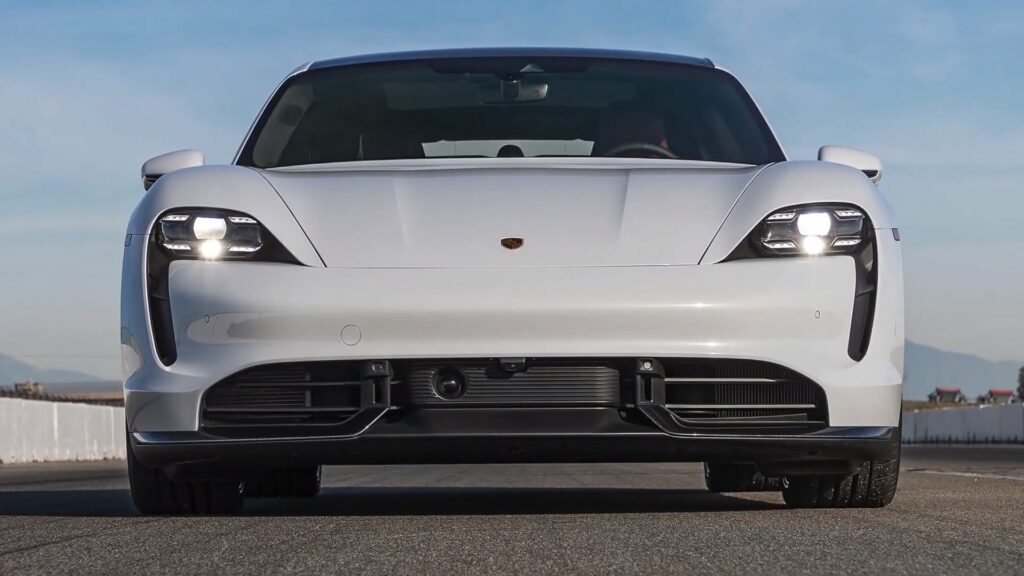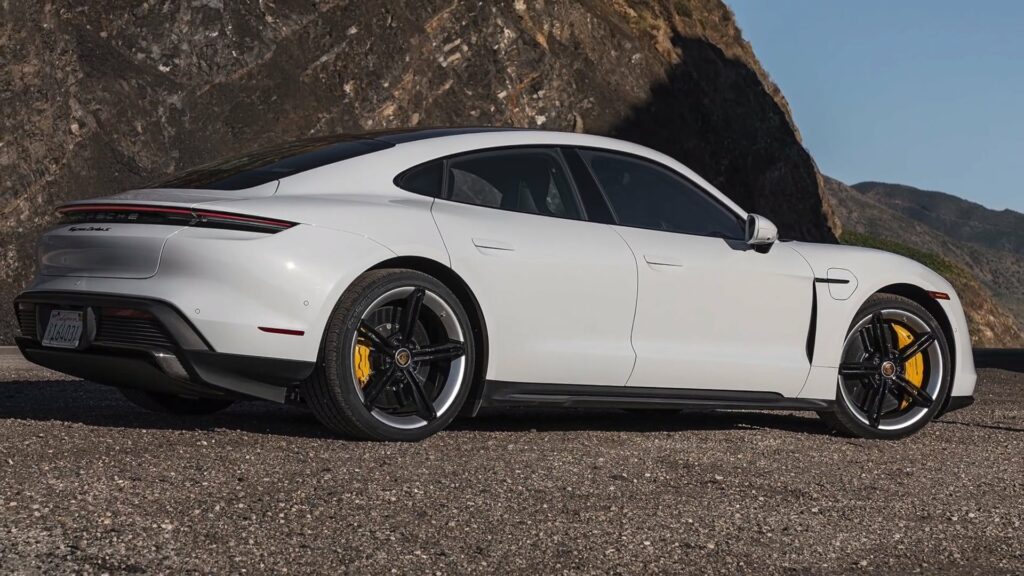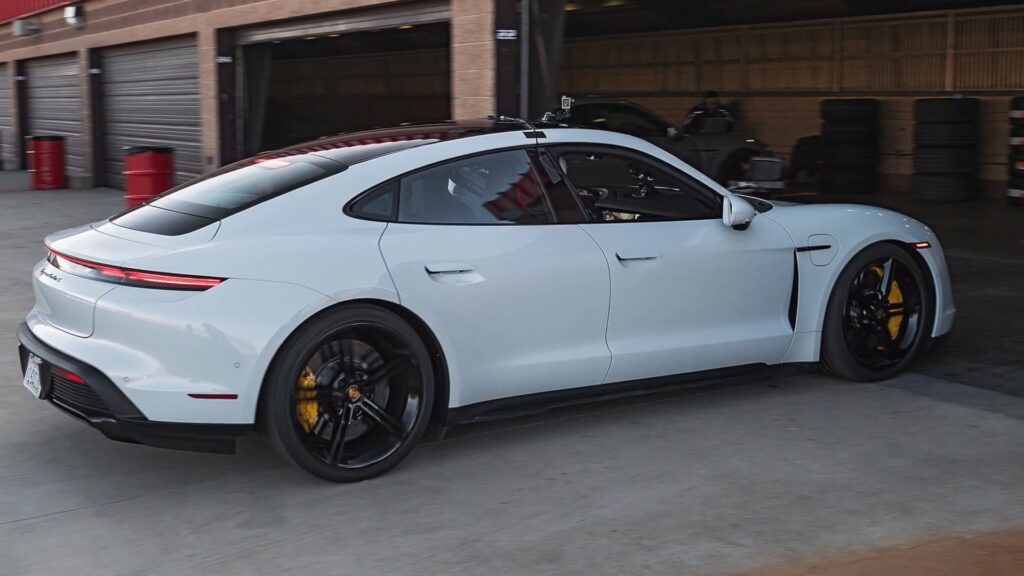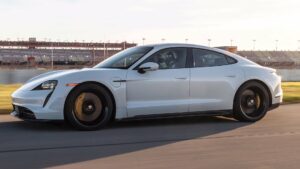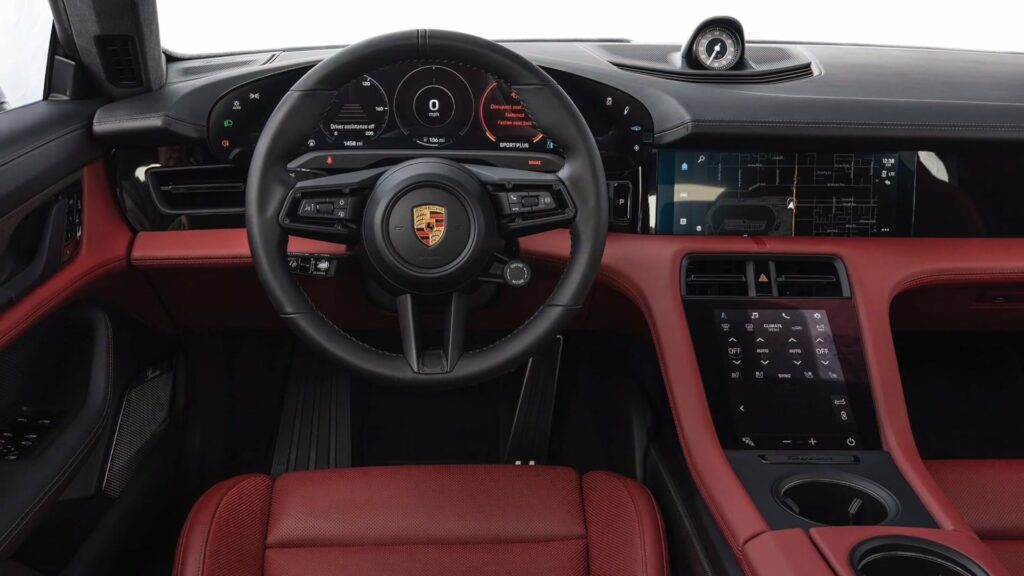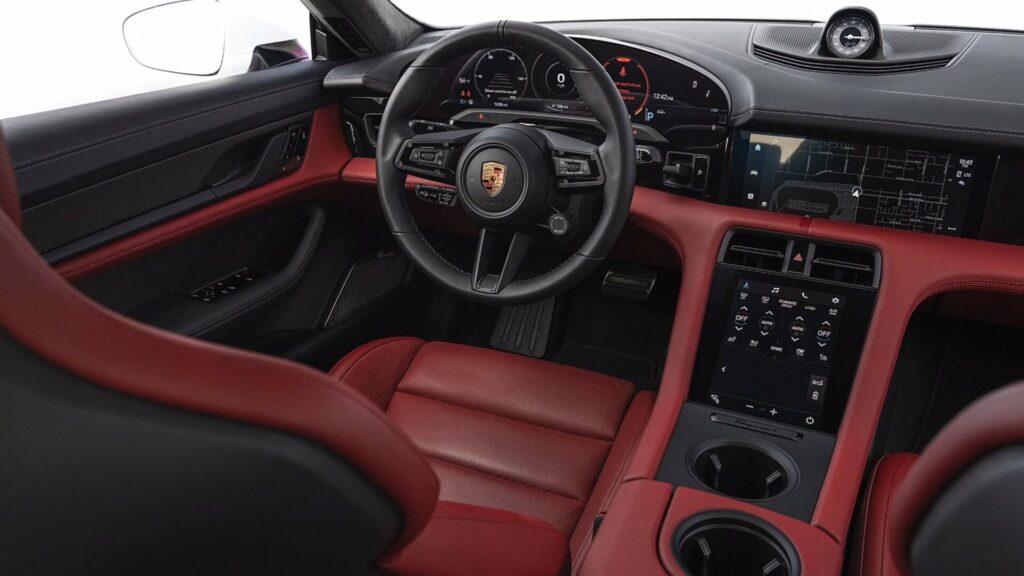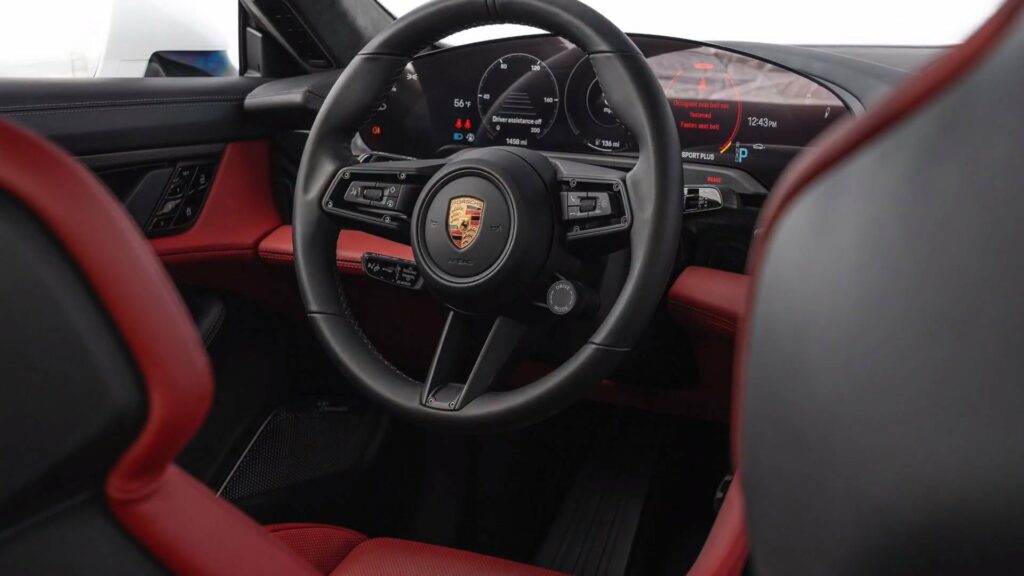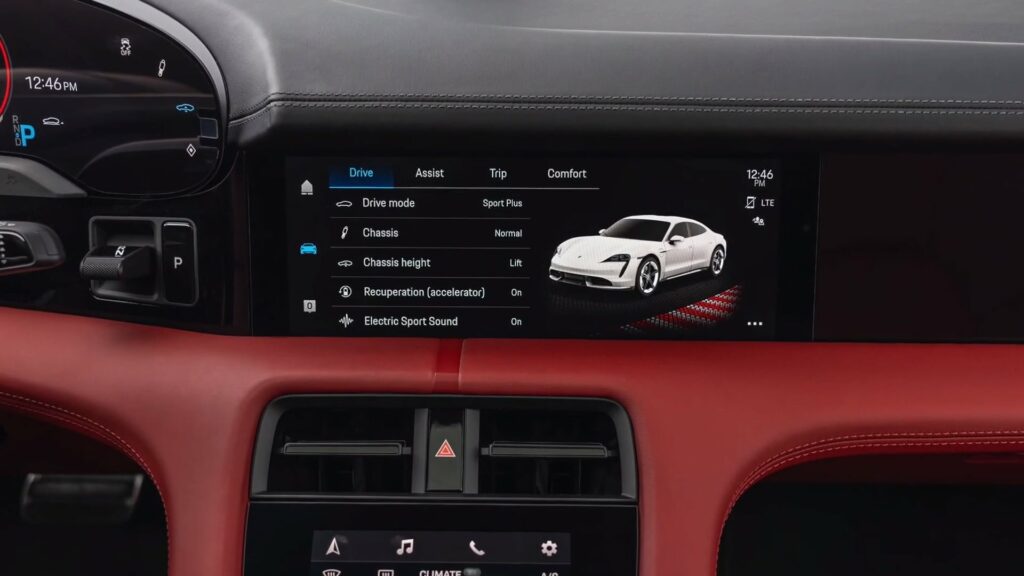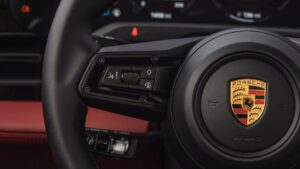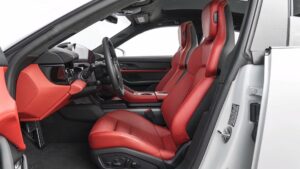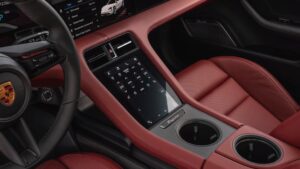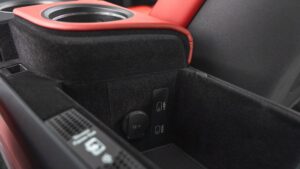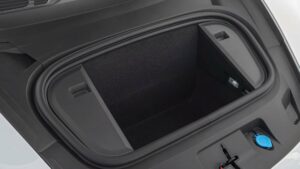Porsche Taycan 4S Cross Turismo
The Porsche Taycan 4S Cross Turismo is an all-electric, high-performance crossover SUV produced by the German automaker Porsche. It was first introduced in 2021 as a variant of the Porsche Taycan sports sedan.

The Taycan 4S Cross Turismo has a twin 420 kW, 650 Nm engine that allows it to accelerate from 0 to 60 mph in just 4.1 seconds. It has a range of up to 405 km on a single charge, making it a practical option for everyday use.

The Taycan Cross Turismo variant features increased ground clearance and a more rugged exterior design, making it suitable for off-road adventures. It also has a spacious interior with plenty of cargo space, making it a great choice for families or those who need to transport a lot of stuff.
Like all Porsche vehicles, the Taycan 4S Cross Turismo is built to the highest standards of quality and performance. It combines cutting-edge technology with timeless design, making it a true icon in the automotive world.
| Performance | |
| Acceleration 0 – 100 km/h | 4.1 sec |
| Top Speed | 240 km/h |
| Electric Range | 405 km |
| Total Power | 420 kW (571 PS) |
| Total Torque | 650 Nm |
| Drive | AWD |
| Battery and Charging | |
| Battery Capacity | 93.4 kWh |
| Battery Useable | 83.7 kWh |
| Europe | |
| Charge Port | Type 2 |
| Port Location | Right Side – Front |
| Port Location 2 | Left Side – Front |
| Charge Power | 11 kW AC |
| Charge Time (0->405 km) | 9 hours |
| Charge Speed | 45 km/h |
| Fastcharge Port | CCS |
| FC Port Location | Right Side – Front |
| FC Port Location 2 | – |
| Fastcharge Power (max) | 262 kW DC |
| Fastcharge Time (41->324 km) | 19 min |
| Fastcharge Speed | 890 km/h |
| Energy Consumption | |
| EVDB Real Range | |
| Range | 405 km |
| Vehicle Consumption | 207 Wh/km |
| CO2 Emissions | 0 g/km |
| Vehicle Fuel Equivalent | 2.3 l/100km |
| WLTP Ratings (TEL) | |
| Range | 452 km |
| Rated Consumption | 226 Wh/km |
| Vehicle Consumption | 185 Wh/km |
| CO2 Emissions | 0 g/km |
| Rated Fuel Equivalent | 2.5 l/100km |
| Vehicle Fuel Equivalent | 2.1 l/100km |
| WLTP Ratings (TEH) | |
| Range | 388 km |
| Rated Consumption | 264 Wh/km |
| Vehicle Consumption | 216 Wh/km |
| CO2 Emissions | 0 g/km |
| Rated Fuel Equivalent | 3.0 l/100km |
| Vehicle Fuel Equivalent | 2.4 l/100km |
|
TEL = Test Energy Low | TEH = Test Energy High
|
|
|
Rated = official figures as published by manufacturer. Rated consumption and fuel equivalency figures include charging losses.
|
|
|
Vehicle = calculated battery energy consumption used by the vehicle for propulsion and on-board systems.
|
|
| Real Energy Consumption Estimation between 146 – 289 Wh/km | |
| City – Cold Weather * | 212 Wh/km |
| Highway – Cold Weather * | 289 Wh/km |
| Combined – Cold Weather * | 243 Wh/km |
| City – Mild Weather * | 146 Wh/km |
| Highway – Mild Weather * | 226 Wh/km |
| Combined – Mild Weather * | 184 Wh/km |
| Energy use for each trip will vary considerably depending on the driver and the conditions. Therefore, we have provided a range of estimates which can be useful in developing an understanding of the potential benefits of this technology. | |
| Dimensions and Weight | |
| Length | 4974 mm |
| Width | 1967 mm |
| Width with mirrors | 2144 mm |
| Height | 1409 mm |
| Wheelbase | 2904 mm |
| Weight Unladen (EU) | 2245 kg |
| Gross Vehicle Weight (GVWR) | 2885 kg |
| Max. Payload | 715 kg |
| Cargo Volume | 446 L |
| Cargo Volume Max | 1212 L |
| Cargo Volume Frunk | 84 L |
| Roof Load | 75 kg |
| Tow Hitch Possible | No |
| Towing Weight Unbraked | 0 kg |
| Towing Weight Braked | 0 kg |
| Vertical Load Max | 0 kg |
| Miscellaneous | |
| Seats | 4 people |
| Isofix | Yes, 2 seats |
| Turning Circle | 12 m |
| Platform | VW J1 |
| Car Body | Sedan |
| Segment | F – Luxury |
| Roof Rails | No |
| EV Dedicated Platform | Yes |
Home and Destination Charging (0 -> 100%)
A public charging station is required to use the highest possible charging rate. The EVSE/charging station’s charging capacity affects how long it takes to fully charge the battery. The table below shows all possible options for fully charging the Porsche Taycan 4S Cross Turismo.
In Europe, plugging an electric car into an outlet is often as easy as plugging it into a household outlet, but there are differences from country to country. The table below shows the different ways to charge the Porsche Taycan 4S Cross Turismo, but in some countries some chargers may not be available.
Type 2 ( IEC 62196)

| Charging Point | Max. Power | Power | Time | Rate |
| Standard 11.0 kW On-Board Charger | ||||
| Wall Plug (2.3 kW) | 230V / 1x10A | 2.3 kW | 43 hours | 9 km/h |
| 1-phase 16A (3.7 kW) | 230V / 1x16A | 3.7 kW | 26h45m | 15 km/h |
| 1-phase 32A (7.4 kW) | 230V / 1x32A | 7.4 kW | 13h30m | 30 km/h |
| 3-phase 16A (11 kW) | 400V / 3x16A | 11 kW | 9 hours | 45 km/h |
| 3-phase 32A (22 kW) | 400V / 3x16A | 11 kW | 9 hours | 45 km/h |
| Optional 22.0kW On-Board Charger | ||||
| Wall Plug (2.3 kW) | 230V / 1x10A | 2.3 kW | 43 hours | 9 km/h |
| 1-phase 16A (3.7 kW) | 230V / 1x16A | 3.7 kW | 26h45m | 15 km/h |
| 1-phase 32A (7.4 kW) | 230V / 1x32A | 7.4 kW | 13h30m | 30 km/h |
| 3-phase 16A (11 kW) | 400V / 3x16A | 11 kW | 9 hours | 45 km/h |
| 3-phase 32A (22 kW) | 400V / 3x32A | 22 kW | 4h30m | 90 km/h |
Fast Charging (10 -> 80%)
If you want to enjoy driving an electric car, one of the most important features to consider is the number of miles per hour the car can travel while charged. This is called the “range” of the car. All electric cars have a certain range, even if they are 100% charged. This is because they do not have an internal combustion engine to lean on if you need to drive a long distance.
Max. Power: The maximum power provided by the charging point
Avg. Power: The average power provided by the charging point during a session of 10% to 80%.
Time: the time it takes to charge from 10% to 80%
Speed: the average charging rate during the session of 10% to 80%
Combined Charging System (CCS Combo 2)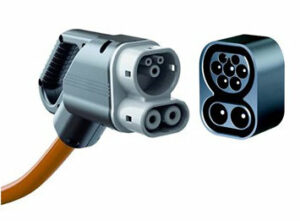
| Charging Point | Max. Power | Avg. Power | Time | Rate |
| CCS (50 kW DC) | 50 kW | 50 kW | 74 min | 230 km/h |
| CCS (175 kW DC) | 166 kW | 157 kW | 24 min | 700 km/h |
| CCS (350 kW DC) | 262 kW | 197 kW | 19 min | 890 km/h |
| Brand | Porsche |
| Body Style | Sedan |
| Car Engine | electric |
| Motor power | 420 |
| Maximum Torque, Nm | 650 |
| Battery Energy, kWh | 93.4 |
| Power reserve (NEDC/EPA/WLTP), km | - / - / 405 |
| Level Charging (230/400/DC), hours | - / 4.3 / 0.19 |
| Electrical Acceleration, 0-100 km/h (0-62.1 mph) in sec | 4.1 |
| Top Speed, km/h | 240 |






